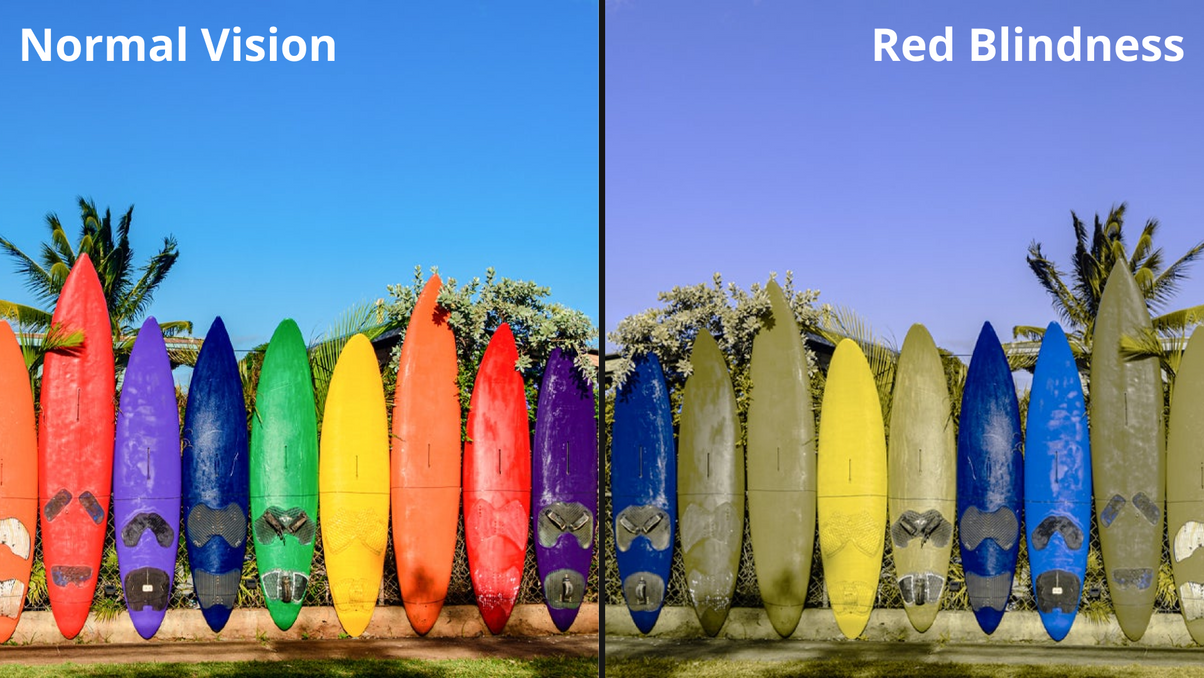What The World Looks Like Through Colorblind Eyes
The world make a little less sense for people who can't see all of its colors.
News that is entertaining to read
Subscribe for free to get more stories like this directly to your inboxFor the overwhelming majority of the population, it’s easy to agree on what color a certain object is. But even if you’re in that majority, you’ve almost certainly met someone who struggles to some extent with recognizing different hues.
Such a deficiency is known as colorblindness, but it comes in various forms and can impact people in different ways. In almost every case, however, life for a colorblind person is probably not what those without colorblindness might expect.
By the numbers
In order to understand just how common (or uncommon) the disparate variations are, let’s take a look at their disbursement around the world.
- About 350 million people worldwide have some form of colorblindness.
- While 8% of men experience such a deficiency, only 0.5% of women do.
- Red-green colorblindness is by far the most common form.
- Total colorblindness (black-and-white) affects only about 1 in 30,000 people.
These statistics can vary greatly depending on region. For example, about 1 in 10 of the the individuals born on the South Pacific atoll of Pingelap inherited the total colorblindness gene.
Everyday issues
While there are obviously much more serious maladies than colorblindness, those who have it are almost constantly bombarded with evidence that the world has been created for individuals who don’t.
Since a majority of colorblind people have trouble distinguishing between red and green, a common example of these daily struggles involves stoplights (or any other symbols using these colors).
Furthermore, when companies and agencies use color-coded maps or charts that might be simple for the majority of people to understand, it can be confusing for those who struggle with distinguishing colors.
There are tools available that can help, but the fact remains that the world was generally created by and for those who see the full spectrum of colors.
 Why Is The Aging Voyager 1 Probe Sending Back Incoherent Communications?
It's been speaking gibberish for a few months and officials are concerned.
Why Is The Aging Voyager 1 Probe Sending Back Incoherent Communications?
It's been speaking gibberish for a few months and officials are concerned. One Woman’s Massive Donation Is Wiping Out Tuition At This Medical School
Her inheritance came with the instruction to do "whatever you think is right."
One Woman’s Massive Donation Is Wiping Out Tuition At This Medical School
Her inheritance came with the instruction to do "whatever you think is right." Woman’s Pets Will Inherit Her Multimillion-Dollar Fortune, Not Her Kids
It's not the first time four-legged heirs were named in a will.
Woman’s Pets Will Inherit Her Multimillion-Dollar Fortune, Not Her Kids
It's not the first time four-legged heirs were named in a will.